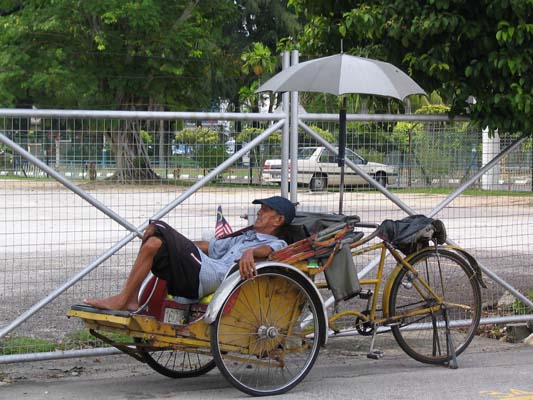
Penang
The first time I visited Penang Island was in 1989 on a backpacking trip through South East Asia. Returning in 2005, I was a bit concerned that the charming old town of Georgetown might have been bulldozed in line with the headlong development taking place in the rest of Malaysia. My worries were beginning to be confirmed in the taxi from the airport as we were whisked along concrete scalextric tracks with views of the latest Tesco Lotus superstores and faceless apartment blocks in nondescript newtowns. However as we descended into Georgetown, I was relieved as the years seemed to roll back and my memories of the old town transformed into reality.
One thing was different however. In 1989 the famous Eastern and Oriental Hotel, a relic of a glorious past, was just a shell, on the knife edge of demolition or expensive renovation. I was gladdened to find that renovation had won over. For an icon of old Asia it was also affordable, at $100, at least for one night. Unlike its sibling, Raffles in Singapore (both were established by the famous Sarkies brothers) its renovation has been exactly that – renovation rather than rebuilding. It looked pretty much as it would have done a hundred years ago. In some places, notably the corridor to our room on the second floor, it looked its age. Perhaps the renovation here was only layers of paint. But once we were shown into our room, or rather suite, as there are no rooms, we really did find ourselves in the lap of luxury of times past.


You enter a sitting room replete with desk, sofa and of course a TV. Forget the TV though because a wide tall window opens out with a view over a manicured garden and beyond that, the straights of Penang and the mainland. If you look back into the room you see the sliding doors into the bedroom. On either side of the bed, table lamps and next to them an old fashioned bell push marked with the word ‘butler’, as the room comes with 24hour butler service. Nice touch. Beyond the bedroom is perhaps the most impressive part of the suite, the bathroom. More sliding doors reveal, in the centre, a shining white tub flanked by sinks, one for him and one for her. In the corners a shower and a toilet and all around gleaming tiles and mirrors. I’d slept in smaller hotel rooms.
Out of the window I had spied the swimming pool. So it was here we had a chance to soak up the remnants of the dying sun. Too early for cocktails? I think not.
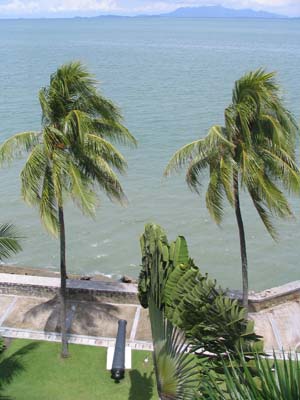
We were only there for a few days, but I think a couple of days exploring Georgetown and then the rest of the island followed by a day or two checking out something we missed or just relaxing were enough for us to sense the essence of Penang. There are plenty of guide books and descriptions of Georgetown so I won’t get into specifics but it is a great place just to wander around, small enough by foot but also handy to hop into a bicycle rickshaw if the legs get a bit tired. Don’t worry. The rickshaw men will soon find you wherever you are.

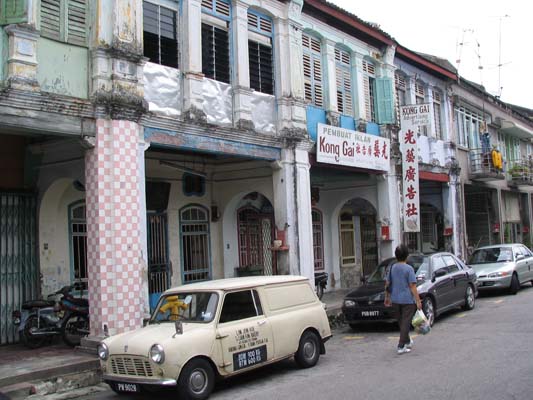



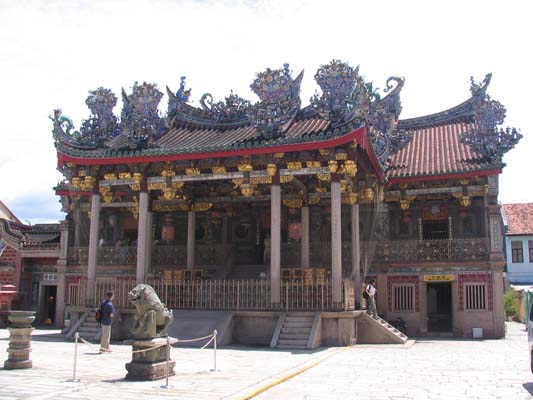
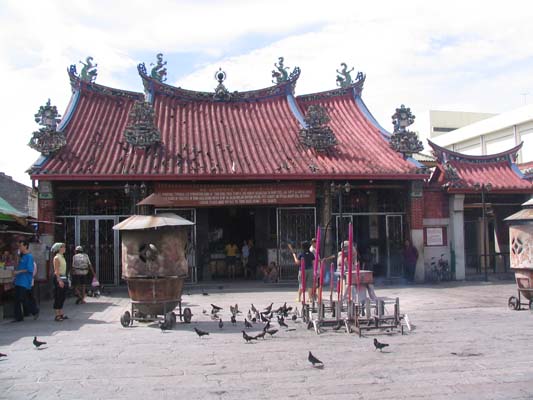
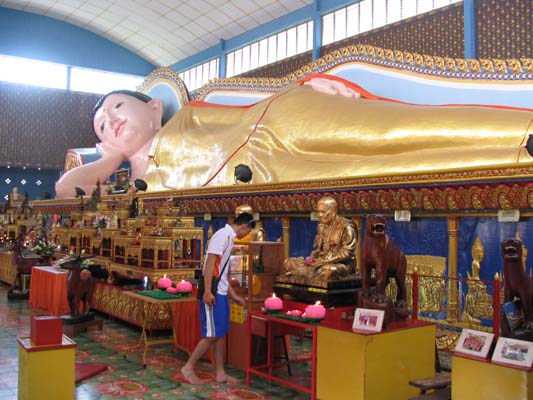
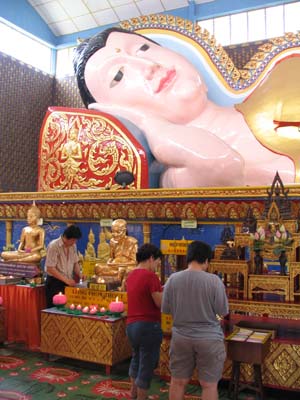
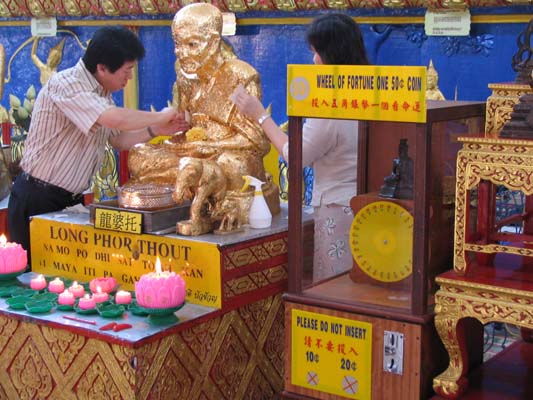
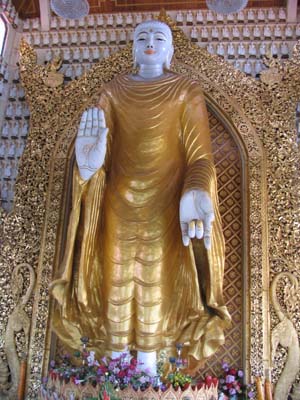
The city was established by Francis Light of the British East India Company in 1786. Since then it has attracted peoples from all over Asia to settle and trade. Their legacy is present in bricks and mortar with Hindu, Buddhist, Chinese and Sikh temples, mosques and churches. Not only religious edifices though, also Chinese shop houses and colonial hotels. After our night in the E&O, we moved to the less salubrious environs of the Cathay Hotel. Much cheaper than its illustrious neighbour but built at around the same time and with loads of character. Including the managers who seemed as old as the hotel but with a politeness from the same age. Although the building was British Colonial in style, the name echoed the dominant force of Georgetown. Since it was established there have been the Chinese and essentially Georgetown is a Chinese city. This hotel (as of 2017) has also now been renovated and renamed as the Edison, an upmarket boutique hotel.
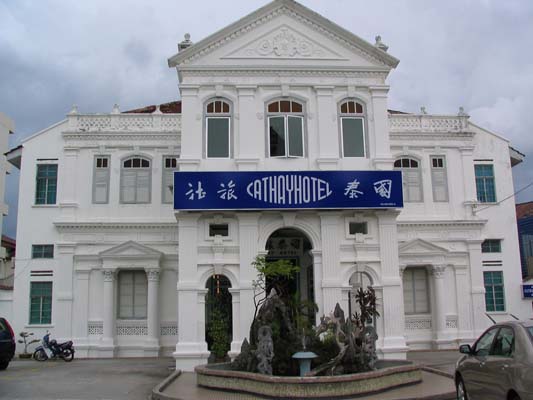
It was refreshing to see that many of the old buildings had remained pretty much unchanged over the years – not subject to the gaudy renovations of Singapore but somehow simply a constant renovation by the people living in them, keeping in the style of the original. It was also pleasantly quiet, the hubbub mainly a result of local people going about their business, be it shopping in the local market or chatting to their neighbours. Even the ‘backpacker’ centre of Chulia Street seemed to hark back to the laidback backpacker places of the 80’s rather than their more up-market cousins established for today’s more moneyed gap year crowd.
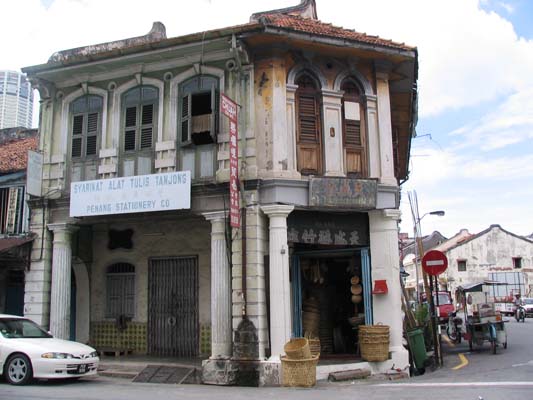

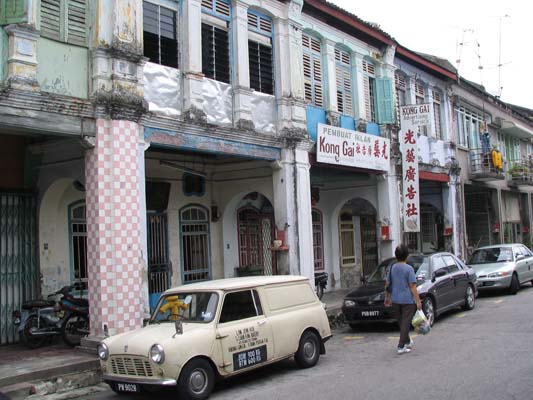
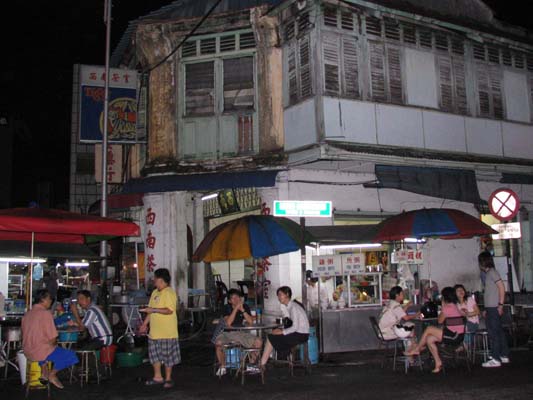

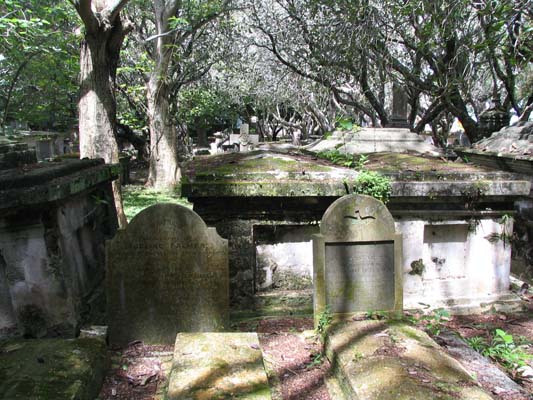
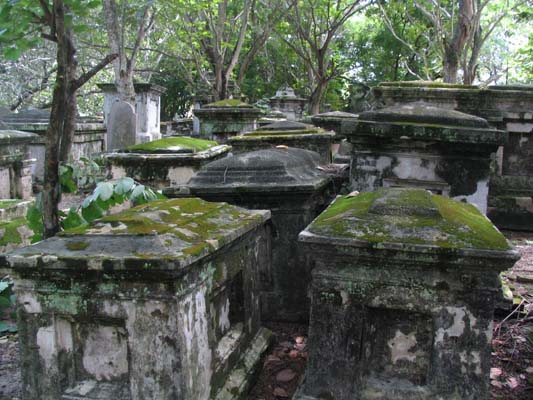
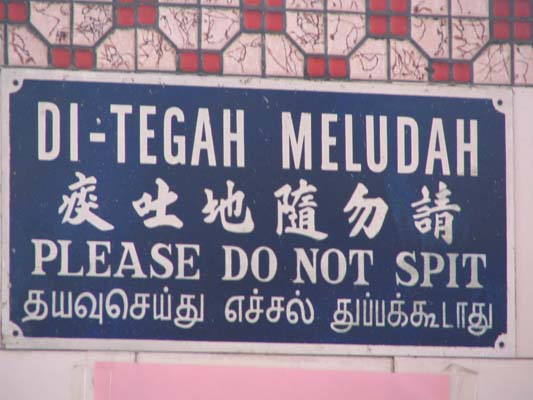

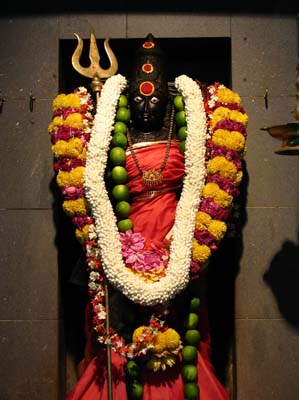
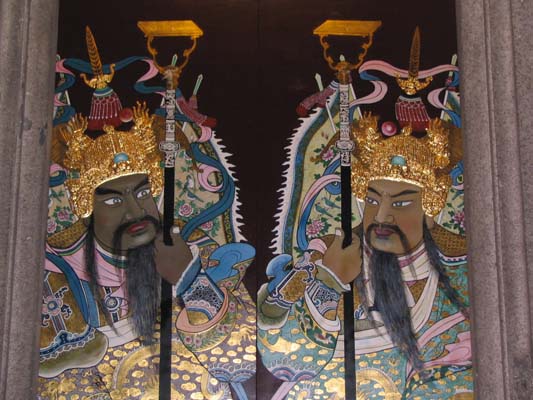
So after exploring the old town we hired a couple of Honda dreams and went about exploring the hinterland. The island itself is pretty small and if you want could circle it in a day. The east coast, south of Georgetown is a bit of a nightmare – wide busy expressways and newtowns. However, going north the suburbs quickly thin out and the road narrows to hug the twists and turns of the coast which reveal glimpses of beaches between palm trees. Soon however, the road opens up again to reveal the beach strip of Batu Ferringhi. The beaches here aren’t the best in the world, but they are pretty quiet and you won’t be troubled by hawkers. They are however dominated by the huge 4 star chains and so can be a bit antiseptic.
The hotels soon run out and the pace of life slows as you pass typical Malaysian fishing villages. We stopped for a swim and were entertained by a pod of dolphins and some sea eagles out fishing. At the north west corner of the island the road ascends into the deeply wooded interior but not before passing the butterfly park, a surprisingly interesting place. There is a large central enclosure which you share with hundreds of butterflies. They also have an interesting collection of the ugliest looking insects you wouldn’t want to meet, some mounted and framed, but others very much alive, including the ones in the scorpion pit.

Up through the tropical rainforest the road climbs, past durian, clove, nutmeg, cocoa and pepper plots. There are also a few waterfalls by the road where you can stop for a dip or sample the local fruits at a roadside stall. As the road descends into more arable land you can experience rural Malaysia, an interesting contrast to the Chinese city. Not least in the architecture. Here the teak stilt houses predominate. As we ventured south it got busier again. The south coast was beachy like the north but had a much more laid-back feel with few, if any, hotels or tourists. Having sampled masala dhosas (South Indian), Nasi Kandar (Muslim Indian curry) and Chinese stir fries in Georgetown, here we had to sample the Ikan Bakar (barbequed fish Malay style), before heading back.
Two other ‘must do’ trips which we did were just outside Georgetown. The Botanical gardens and Penang hill. Not too far from one another so certainly doable together in a leisurely day. You can even walk between them through the rainforest if you’re pretty fit and don’t mind the heat. The Botanical Gardens were established by an Englishman, Charles Curtis in 1884. They were planted over a disused granite quarry which is no doubt why they appear in a natural amphitheatre framed by the magnificent backdrop of the jungle. Paths take you past some interesting trees, the orchid house and the fern house but also give you a little taster of the rainforest as well. In addition, you will no doubt meet the tribe of monkeys which inhabit the gardens but on the whole they go about their business and ignore the tourists.

From here we went on the funicular railway to Penang Hill. A surprisingly steep and lengthy trip. However at the top you are given the most amazing view of the island and across to the mainland. After the sultry heat of the tropical lowlands, it is also pleasantly cool. There is an old hotel on the top which is a nice place for a cool drink and to take in the view – it would appear not much changed from the 1800s as the hotel has a number of paintings from those days. However, don’t be glib about the sign to watch out for puff vipers in the garden – we saw one and I don’t think he was a pet.


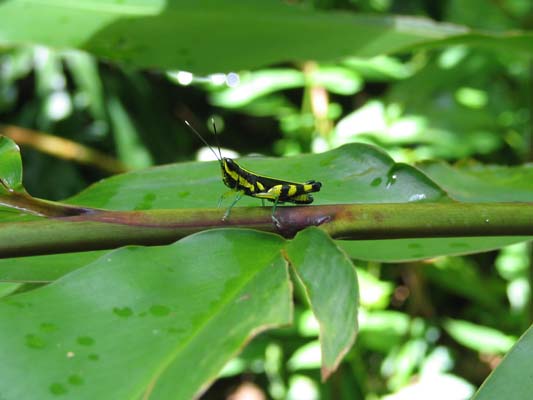
While waiting for the tramcar we took one last lingering look at the view. I had enjoyed my return to Penang, not least because it had stood the test of time, a difficult thing to do these days. But then we spotted red areas – jungle that had been cleared for development, we also saw a huge reclamation project to the north of the island and tall apartment blocks to the south. Thankfully Georgetown seemed to be safe from such developments – but for how long?
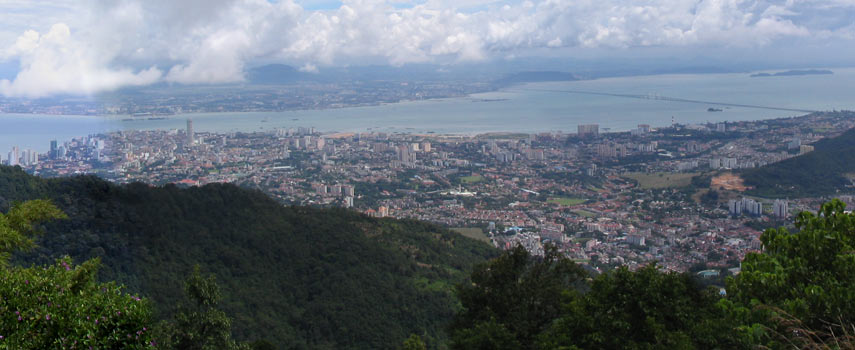
More photos of our trip here